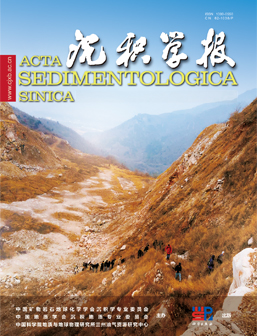Middle and Late Holocene vegetation and climate change in the intermountain basin of Middle Tianshan Mountains, Xinjiang, China
doi: 10.14027/j.issn.1000-0550.2024.058
- Received Date: 2023-12-28
- Available Online: 2024-07-02
-
Key words:
- pollen /
- middle-Late Holocene /
- middle Tianshan Mountains /
- vegetation /
- climate
Abstract: [Objective] The Tianshan Mountains in Xinjiang are located in the inner part of the Asia-Europe continent, in the transition zone between the westerly and monsoon circulations, and are sensitive to climate change. Academics have not yet united on the understanding of the Holocene environmental evolution in the region, and supplementing more high-resolution climatic records in the sensitive areas is the basis for clarifying this issue. [Methods]The study material was taken from the Middle Tien Shan Intermountain Basin, we reconstructed the vegetation and climate change processes in the study area since the Middle and Late Holocene, based on the AMS14C dating results and using sporadic pollen as a paleoclimate proxy. [Results and Discussions] 6369-3601 cal yr B.P. The period of Artemisia and Chenopodium was characterized by high content, positive pollen PCA axis 1 scores, and wet-dry fluctuations in the climate, with dryness as the dominant factor and abrupt climate change. 3601-2512 cal yr B.P. The period of spruce Picea content was characterized by elevated content, positive pollen PCA axis 2 scores, and cold-wet climate. 2512-1016 cal yr B.P. The period of Betula was characterized by increased content, positive pollen PCA axis 1 transitionscores, warm dry climate. [Conclusion] The three pollen zones indicate that the Middle and Late Holocene climate in the Zhongtianshan Intermontane Basin went through 3 phases of wet-dry fluctuations (off-dry)-cold-wet-warm-dry. Since the middle to late Holocene, the study area has received less solar radiation in summer, Weak evaporation from the North Atlantic sea surface and low water vapor carried by the westerly circulation, the climate has been arid. in the early Late Holocene, the westerly circulation shifted to the south, Superimposed negative phase of the North Atlantic Oscillation (NAO) transporting large amounts of water vapor and the climate was cold and humid. Then the climate became warm and dry due to the increase of solar radiation in the late winter. The abrupt climate change characterized by cold and dry conditions during 4766-3601 cal yr B.P. was a response to the "4.2 ka B.P." climatic event, which may have been caused by the weakening of the westerly circulation due to the weakening of solar radiation, the intensification of the cold in the middle and high latitudes, and the lowering of the SST in the North Atlantic Ocean.
| Citation: | Middle and Late Holocene vegetation and climate change in the intermountain basin of Middle Tianshan Mountains, Xinjiang, China[J]. Acta Sedimentologica Sinica. doi: 10.14027/j.issn.1000-0550.2024.058 |






 DownLoad:
DownLoad: